


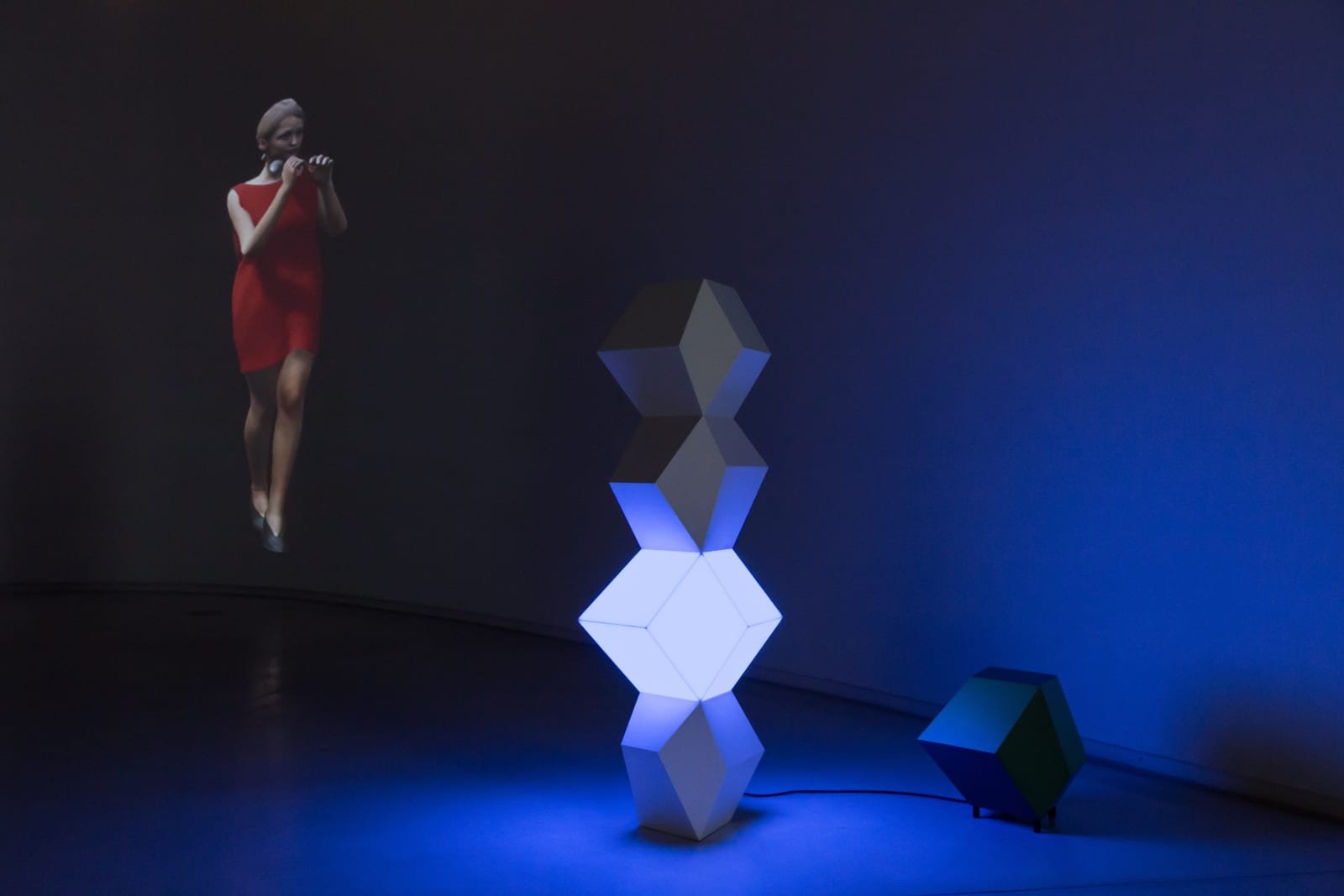


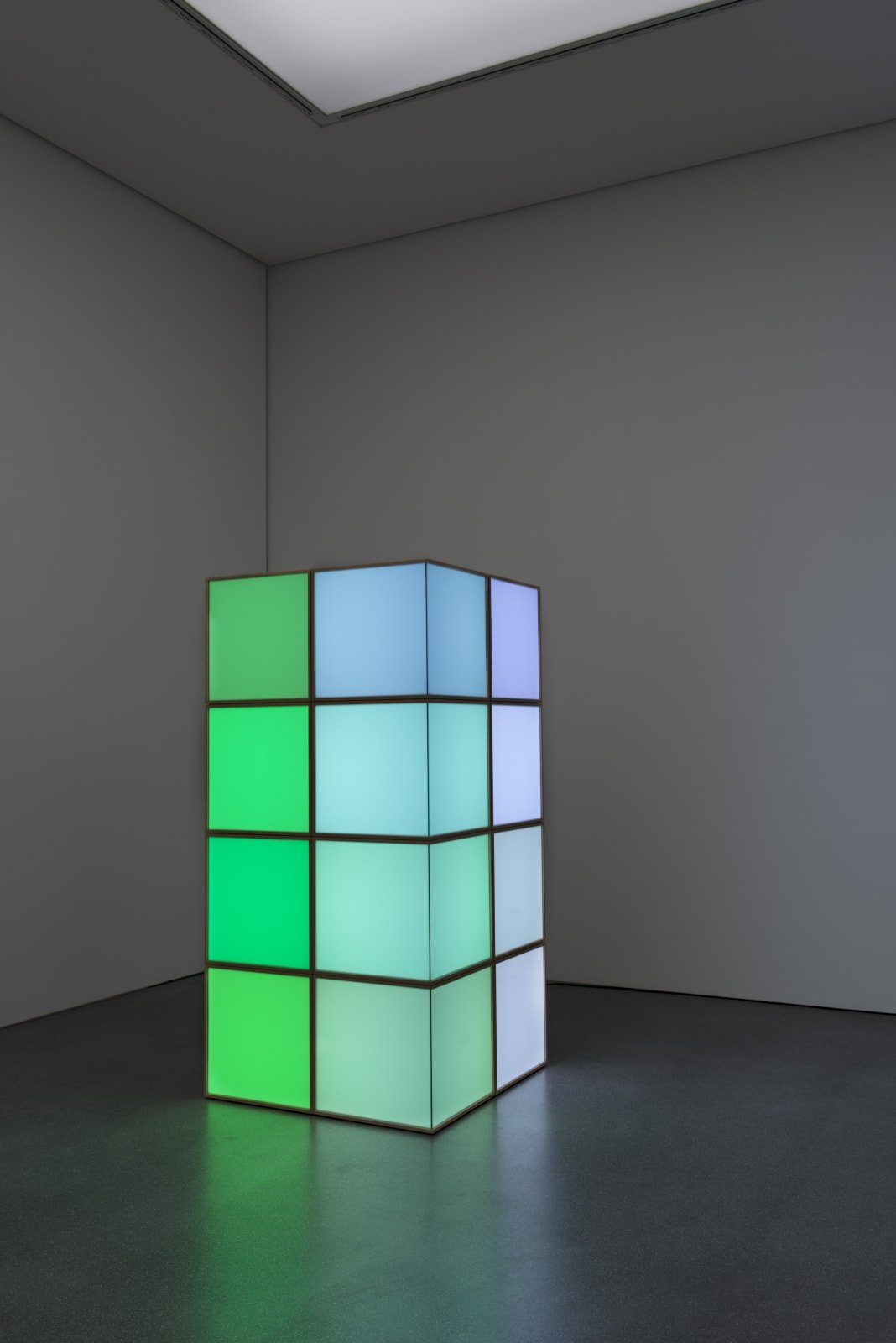

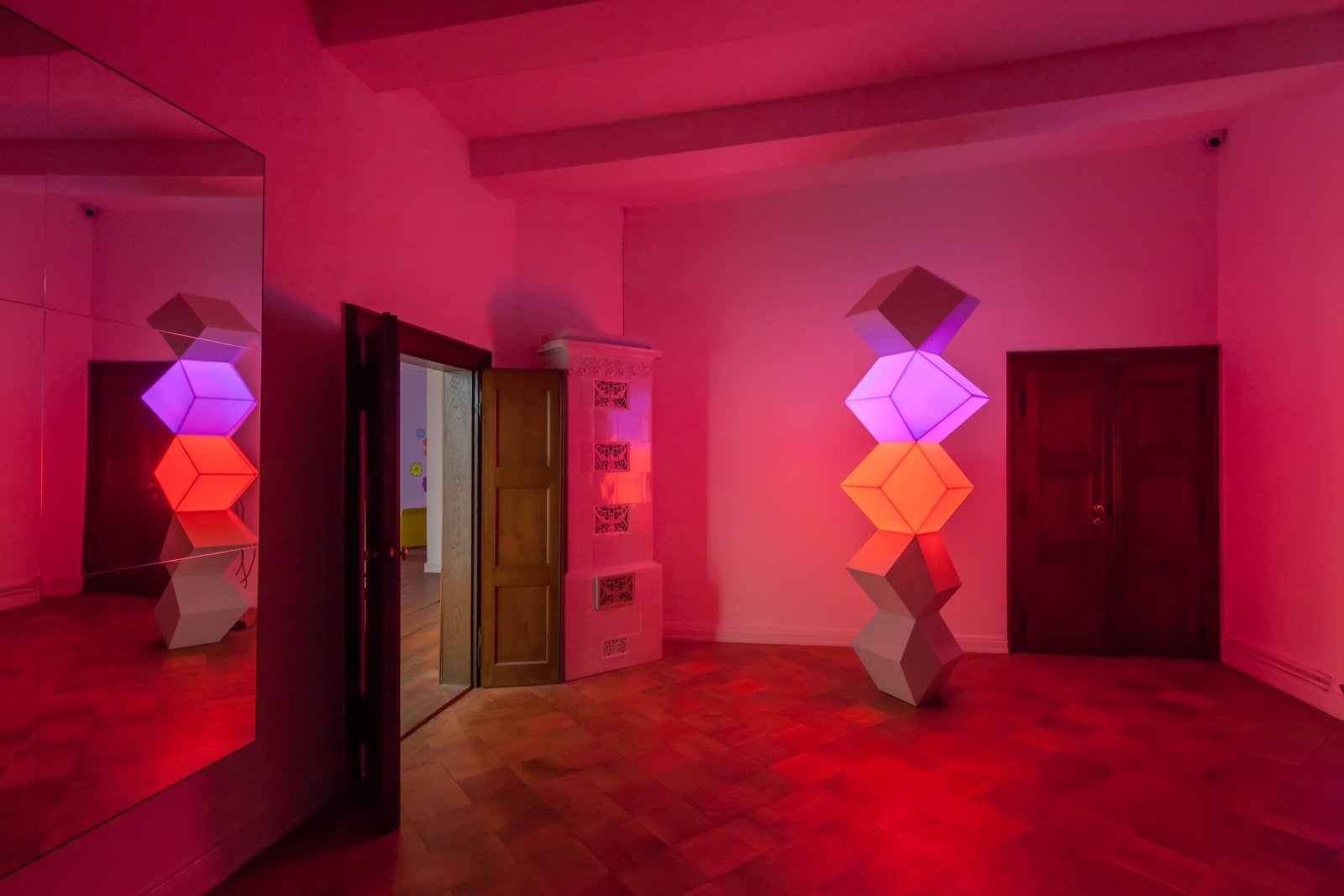


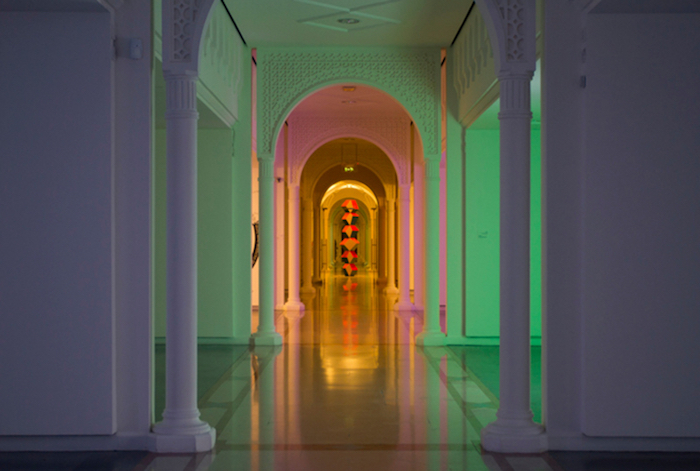



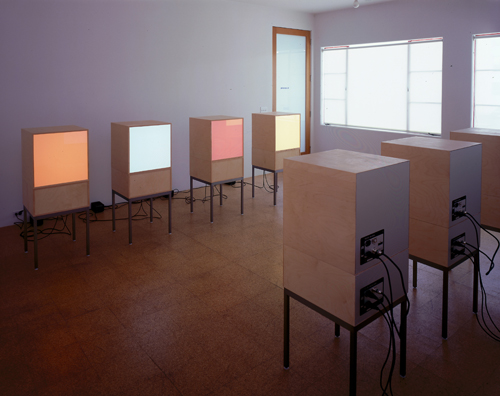
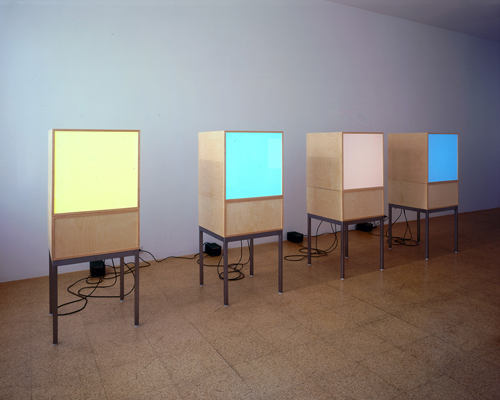

















The work of Angela Bulloch (b. 1966, Ontario, Canada) spans many forms, all of which manifest a fascination with systems, patterns and rules, and the creative territory between mathematics and aesthetics. Since graduating from Goldsmiths College in 1988 as part of the ‘freeze’ generation of young British artists, her work has crystallised into a number of distinct but related strands. The ‘pixel boxes’ have become her most familiar component: initially fabricated in beech wood with a plastic front screen, their softly changing and pulsing colours distil and abstract complex visual patterns into simple shifting monochromes. These works became the signature of a conceptual practice that avoided the shock strategies of many of her contemporaries. More recently, fabricated in copper, aluminium or corian they pay closer homage to their minimalist heritage, while the colours they channel are freed from their earlier origins to become pure abstractions.
Alongside the pixel box sculptures, Bulloch has also returned to the ‘Drawing Machines’ she made early in her career. They operate a simple conceit: a machine draws vertical or horizontal lines on the gallery wall according to some external stimulus – noises made by visitors to the exhibition, or the rhythm of their sitting on and standing from a bench placed facing the work. But this simplicity belies the rich and complex way in which the Drawing Machines bring together modernist concerns of the grid, the monochrome, and the colour field with a playful engagement with interactivity. In a third strand, Bulloch has created electronic simulations of the night sky, which have been exhibited in both large-scale public installations and smaller domestic panels. She selects an area of the sky based upon the primary constellations of the stars it contains and then extrapolates the view point to a location far from the earth, to create a representation of real space, but as her viewers could never see it.
Published on the occasion of the exhibition 1+1. The relational years, curated by Nicolas Bourriaud with associate curator Eleonora Farina at MAXXI from October 29, 2025 – March 1, 2026
Texts by Sara Arrhenius, Lars Bang Larsen, Noah Barker, Daniel Birnbaum, Nicolas Bourriaud Maria Emanuela Bruni, Diana Campbell, Bassam El Baroni, Verónica Erazo, Eleonora Farina, Angela Harutyunyan, Mami Kataoka, Mihnea Mircan, Stéphanie Moisdon, Linda Motto, Francesco Stocchi, Monia Trombetta, Wato Tsereteli, Jochen Volz
Artworks by Francis Alÿs, Kutluğ Ataman, Vanessa Beecroft, Monica Bonvicini, Britto Arts Trust, Angela Bulloch, Sophie Calle, Maurizio Cattelan, Lygia Clark, Braco Dimitrijević, Annika Eriksson, Alicia Framis, Liam Gillick, Dominique Gonzalez-Foerster, Felix Gonzalez-Torres, Douglas Gordon, Joseph Grigely, Jens Haaning, Carsten Höller, Pierre Huyghe, Christian Jankowski, Kimsooja, Ben Kinmont, Maria Lai, Mark Leckey, Ken Lum, Lee Mingwei, Gianni Motti, Grace Ndiritu, Hélio Oiticica, OPAVIVARÁ!, Gabriel Orozco, Philippe Parreno, Pia Rönicke & Zeynel Abidin Kızılyaprak, Cesare Pietroiusti, Premiata Ditta, Anri Sala, Julia Scher, Santiago Sierra, SUPERFLEX, Rirkrit Tiravanija, Gillian Wearing, Franz West, Elin Wikström, Ian Wilson
Published by Quodlibet in collaboration with MAXXI
ISBN 9788822924186
2025, pp. 232
167x240 mm,
Dutch/Italian
paperback
color illustrations
Combines critical essays and visual notes compiled in the process of the Canadian-born, Berlin-based artist's collaboration with composer and musician George van Dam and a TV script written by Christine Lang and Christoph Dreher.
Publisher: Witte de With
ISBN: 978-94-91435-00-3
Angela Bulloch's works often deal with systems of rules and viewer interaction. Drawings make up the core of this publication, including Drawing Machines, a series begun in the 1990s, which involve observers in the production process.
Publisher: Hatje Cantz
ISBN: 978-3-7757-3171-3
Rule Book is an extensive collection of guides, instructions, manuals and rules that have been amassed by Angela Bulloch. They are taken from sources as disparate as: parking restrictions, the Ten Commandments, the standing order of the House of Commons, hankie colour codes, Birkenstock care tips and the detoxification diet.
By displacing these rules from their social and political context Bulloch reveals their 'man-made structure' as well as a society that, in order to maintain a stable social structure, imposes regulations and controls on every conceivable form of activity. As such, the book forms an intriguing snapshot of society at the close of the twentieth century.
Paperback: 128 pages
Publisher: Book Works (October 1, 2000)
ISBN-10: 1870699440
ISBN-13: 978-1870699440